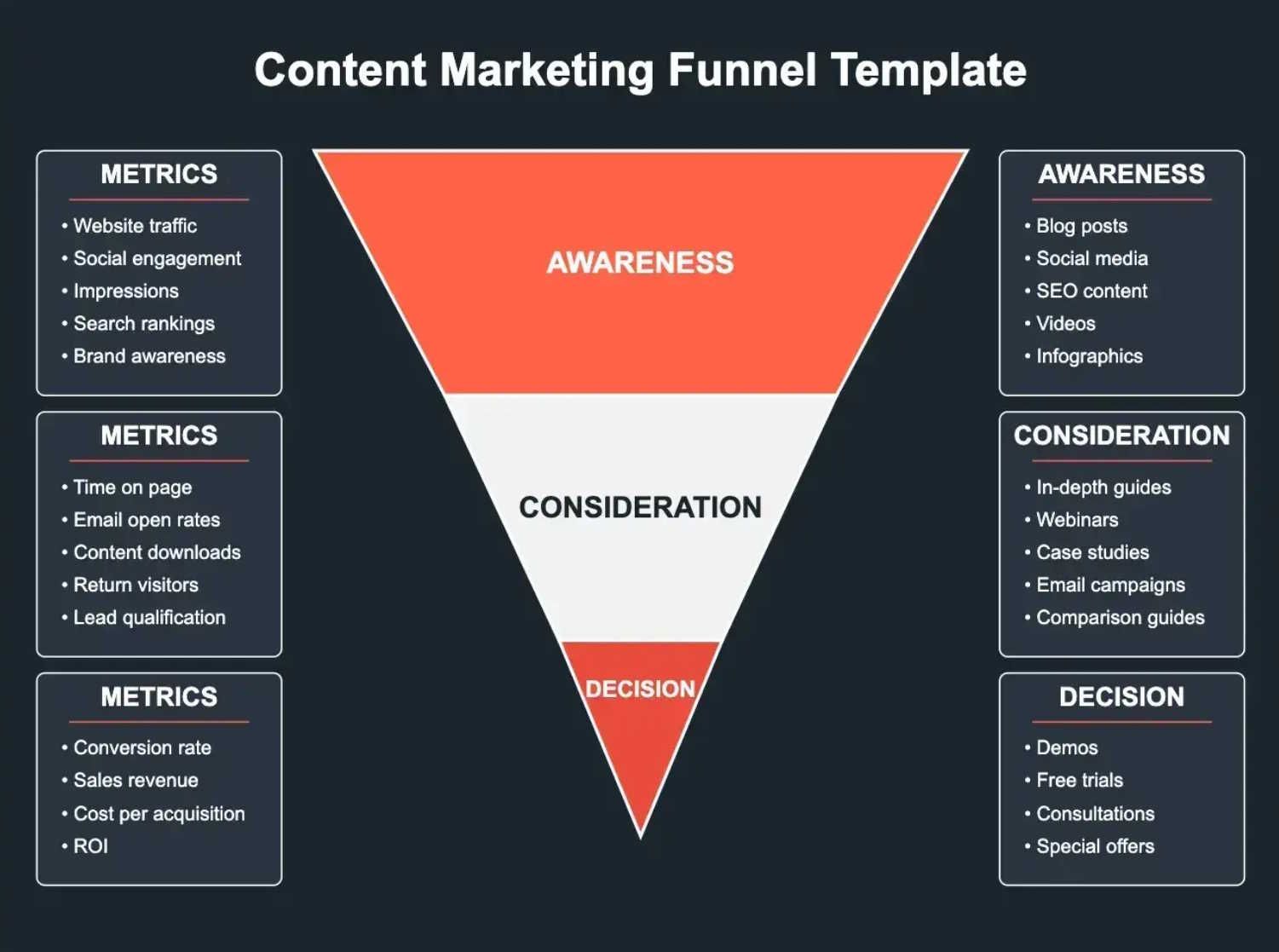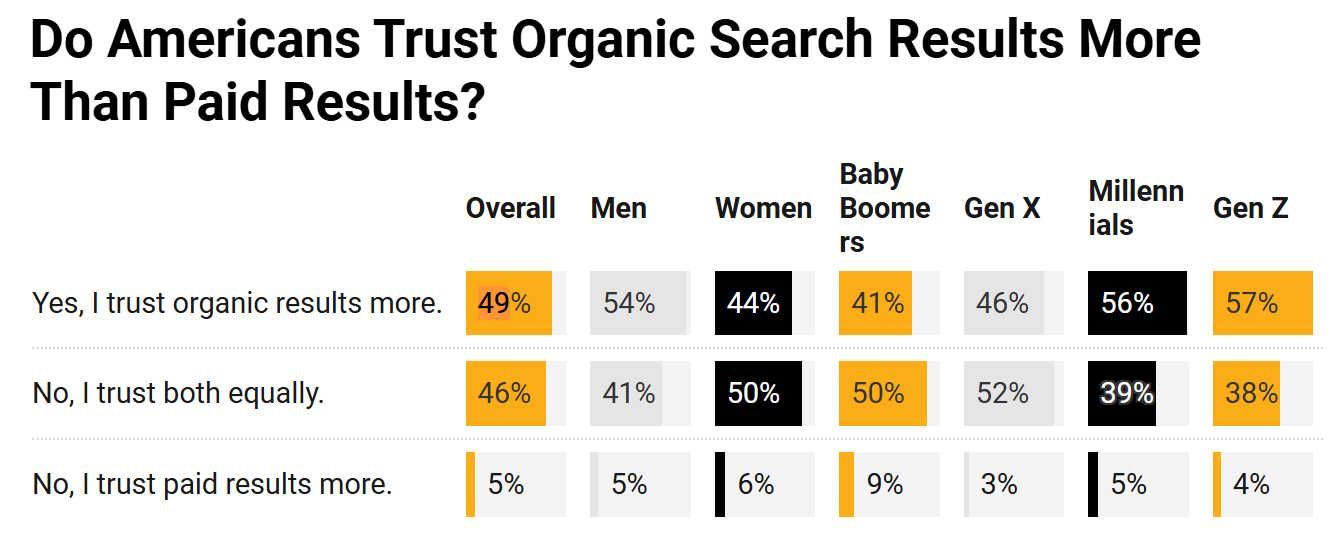Developer Content in the Age of AI
 HeavybitHeavybit
HeavybitHeavybit
How is Developer Content Changing in the Age of AI?
The cliche “developers hate marketing” suggests they don’t care for traditional marketing channels, like TV commercials or email signup forms. (And many don’t.) But it’s not impossible to market to technical personas, either. Instead of sitting passively through a demo, devs prefer to actually try software, or to explore articles, documentation, or podcasts, which has made technical content a powerful marketing tool.
But now that AI has gobbled up so much of the internet, is it sufficient for technical startups to write technical content, then sit back and wait for developers to wander in? As more people utilize generative AI chatbots as a proxy for search, how should founders think differently about content?
Developer content expert Oleksii Klochai of Wizard on Demand suggests actionable steps for technical startups to improve their content program for both SEO and GEO (generative engine optimization):
Transition Away from the TOFU Fluff
Unspecific, top-of-funnel content without any net-new information doesn’t drive revenue or differentiate your startup from competitors, even if it’s ranking #1 on Google.
BOFU Content
Specific, opinionated bottom-of-funnel content explaining how your product fits customers’ needs sets you apart for both human and LLM readers.
Utilize Zero-Click Best Practices
As you gain awareness from unclickable LLM results, focus on clearly-stated use cases, examples, and social proof on-site, as well as credible third-party mentions elsewhere.
Reconsider Distribution
Beyond posting just to your website, consider respectful participation in closed communities and experimenting with paid placements.
Re-Evaluate Measurements and Team Setup
Focus on measuring outcomes across a lightweight team that includes product experts and technical marketers.

More Resources on Developer Content
- Article: The Future of Software Documentation in the Age of AI with Heidi Waterhouse
- Article: Personal Branding for Founders with Karl Stewart
- Article: Educate Technical Audiences With Template Marketing by Al Chen


The classic SEO content funnel may be on its way out. Image courtesy HubSpot
Is Long-Form SEO Content Past Its Shelf Life?
Klochai suggests that for technical startups, the days of the “HubSpot playbook,” producing massive quantities of long-form articles to try to build your brand into its own publishing house, may be over. “Basically, people were saying: You should publish a lot. But I think there has been a huge shift.”
The content expert suggests that the shift in interest may have gone from top-of-funnel (extremely broad content intended to generate awareness) towards bottom-of-funnel (more-specific content targeted at buyers who are already in-market and actively shopping for a solution).
“I think this shift is a good thing that should have happened 10-15 years ago. LLMs have helped it in some ways.” Klochai points out that TOFU (top-of-funnel) content is often so high-level that it covers general-knowledge topics, which are already being covered in Google’s AI Overviews and in basic LLM responses. Frequently without citations.
BOFU (Bottom-of-Funnel): Unique Insights About What You Do
The content expert suggests that specialized startups can offer a unique perspective on technology, which probably should’ve been the focus of content all along. “For example, if you work at a Kubernetes monitoring startup, you have the opportunity to write about that topic and express opinions on best practices. Rather than a generic topic like ‘How to build a sales team.’”
“It might not even make sense for such a startup to even try to build a generic Kubernetes content resource, because that has also been done. The real opportunity, and a lot of the value, can be found in BOFU content.” The content expert notes that for a time, e-commerce vendors in particular focused on getting product recommendations from popular chatbots like ChatGPT.
However, recent reports suggest that ChatGPT is referring 50% less traffic to external websites. Klochai also notes, “At the time of this writing, the number of user sessions originating from ChatGPT is less than 1% of overall website traffic.”
“There is still value in being mentioned as a product recommendation, but that might take the form of a user asking: What products should I use for X problem? And you might appear as one of the recommended products, maybe without the link to your website. But maybe just being featured as ‘One of the Companies That Can Potentially Solve the Problem’ is what matters.”
“This is why people started paying attention to BOFU: If you want to appear in [LLM] product recommendations, these systems need to understand that this problem is actually something that you help solve. And if you don't have anything on your website, or online anywhere, that talks about your positioning in this specific way, then these systems have no way of finding that out.”
“The problem is that a lot of people don’t seem to really know how to do BOFU.” The content expert suggests that many orgs’ content programs have focused on high-level TOFU content for so long that they may have forgotten how, or never learned, to create lower-funnel content.
Klochai suggests that the new beachhead for technical content is greater focus on specific problem spaces. “People are starting to write very focused pieces about their problem space, about how their products fit into the market. I think people are going to continue realizing that BOFU opportunities are important to communicate what your product actually does.”
“And that it’s actually okay to be selling your product.”
Content for Audiences Doing More Research Than Ever
The content expert doesn’t argue with past research suggesting anywhere from 57% to 74% of sales prospects complete most of their research before contacting a vendor. The deep research that in-market buyers perform makes it even more important to help LLMs, and search engines, correctly identify what your startup does and what your product can do.
“Technical companies may be competing with a few established competitors, but relatively speaking, the most competitive SEO niches are gambling and medicine-related topics. Basically, what I mean here is writing, in clear language, about what your product does from multiple perspectives, not really worrying about saying the same thing twice.”
“That's how natural language works. If you really believe something, then it's okay to say it again and again on different pages. And that also communicates to whatever model or crawler looking at your site that this is actually an important thing, whether that’s synonyms or different ways of describing what you do.”
The content expert points out that another piece of the puzzle is how external websites talk about your company and products. “This seems like a bit of an unknown for LLMs at the moment, though there's a lot of chatter about how many responses are being picked up from places like Reddit, for example.”
“But you don't really have control over what is being said about you on Reddit. (As I understand it, there are currently lots of companies, even household names, that are manipulating Reddit by seeding conversations and doing all kinds of unethical stuff.) I'm not suggesting this is a good thing and I'm really hoping that platforms including Google and Reddit crack down on some of this stuff.”
“But if this is going to be the next frontier, then what do you need to do on your side in terms of advertising, PR placements, and marketing? To help people understand and be able to correctly explain to others what you do?”
"If you really believe something, then it's okay to say it again and again on different pages. And that also communicates to whatever model or crawler looking at your site that this is actually an important thing.” -Oleksii Klochai/Principal, Wizard on Demand
What Does Zero-Click Marketing Mean for Technical Content?
The content expert suggests that messaging and creative assets can both affect the success of a startup trying to get attention. “Is everything going toward zero-click marketing? Is all Web traffic going to continue dropping in the future? It’s hard to say and I’m still undecided. I don’t think Google-style searching will be completely replaced. Research suggests LLM users may be using Google differently, but they still use it.”
However, the content expert notes that in response to prompts, LLMs tend to present a rather limited amount of information, which may eventually drive buyers to your website even without a direct link. While OpenAI recently announced in-chat e-commerce, it’s not clear how well B2B software will fit.
“If you’re a dev using a coding tool like Cursor, you might ask LLM chatbot to generate some code for you, and the code ends up using a library that’s part of a paid service. That could eventually be an interesting funnel that skips the initial website visit. But generally, you’ll probably end up going to the website of that library or the company that created it, and you’ll be looking over their solutions.”
“So, I think having a website continues to be important from the perspective of publishing and documentation.” Klochai suggests that despite some portion of searches potentially going to zero-click behavior, media consumption habits won’t change overnight. “Our information needs are much higher and more intensive than search behavior. And that is not going away anytime soon.”
How Technical Audiences Are Consuming Content Differently
“I think a lot of developers still want to read, and like to read. But the way they discover what to read is changing quite a bit.” Klochai notes that developers, like everyone else, are on social media, including communities like Hacker News. “But that’s discovery, and people are still very much interested in depth of information.”
“If you’re the head of marketing at a technical startup, and you want to talk to technical personas, you have to think about the distribution angle. How are you going to get people to read what you wrote?” Previously, orgs might have focused on SEO and organic reach, which might have been fine. “I think that these days, you're going to have to be much more intentional about how people are going to discover what you wrote.”
“Do you post on Hacker News, then call it a day? Or are you going to do something a little bit more sophisticated? For example, an owned media approach that doesn’t depend as much on what else was being posted on that channel. Something that gives you a little more control and predictability over how many people will read.”
“This could mean building a newsletter. It could mean visiting multiple communities and making it a habit to distribute things a little more actively. Which may mean being a genuine participant in communities where people are hanging out, and not just posting your links. Actually coming in and answering questions and communicating with others, whether that’s in a Slack or Discord channel or anywhere else.”
The content expert also suggests that startups may be underutilizing paid promotion for content “Lots of companies run ads. In many cases, very few of those ads actually go to content. But a lot of the interesting ideas that companies actually want to distribute aren’t necessarily on landing pages: They’re in content pieces and blog posts.”
“There’s a lot of stuff you can do to open up your offerings, including why you’re using paid channels. If you’re using paid, you can do much more to actually push your content to people who might otherwise not naturally find it.”
The content expert notes that different personas may have different preferred channels, social media and otherwise. “Depending on what you want to do, you have to understand how those places work and how to get people to read your stuff in those channels. I think that is an important skill to have for a marketer these days.”

49% of searchers trust organic results more than paid. Image courtesy PageOnePower
How Should Startups Rethink Distribution of Technical Content?
The content expert admits that busy marketing leaders at technical startups need to make difficult trade-offs when it comes to resourcing the creation and distribution of content versus the expected outcomes. It’s important for marketers to properly scope how much time they can invest into content on a per-article basis in terms of creation and distribution, and that they can commit to doing it consistently.
“The question is: How do you find the right balance of getting the right people involved, with a reasonable amount of time invested? For example, distributing content to closed communities: You cannot just post promotional links there. It's more jumping in and commenting if there’s a relevant conversation happening.”
“But the amount of time that takes on a weekly basis? Understanding in some cases, like a free Slack community, you may comment once and after 90 days, all history is gone. And you have to go in and do it again. That is kind of one level of effort that you could be putting in.”
“For early-stage companies that understand certain things don’t scale, this kind of thing could be interesting. You have a chance to talk to people and maybe have some kind of deeper discussion, not just about product recommendations.”
Beyond genuine community engagement, the content expert suggests that startups might explore paid partnerships with active communities. “I think startups aren’t really thinking enough about opportunities to do some sort of sponsorship of these closed communities. Obviously, in an ethical way that does not create weird incentives or anything like that.”
Klochai points out that paid campaigns can help justify investing in sophisticated creative assets, but there are limitations and trade-offs. 49% of online users trust organic results more than paid search results (the other 51% being ambivalent). “It seems similar for social media: If a Tweet is promoted, you may trust it a bit less than a non-promoted Tweet.”
“But there are a lot of ad formats that appear to be merging traditionally promoted and non-promoted content. LinkedIn now offers ‘Thought Leader ads’ which look like normal posts, but say they’re ‘sponsored.’”
“We’ve found quite a bit of success with these types of paid programs that use platform-native content. It’s about not trying to interrupt people with whatever kind of format that you decide is ‘best,’ such as a shiny video. It’s about trying to create things that fit within that platform, and then leaning into the paid distribution on that platform.”
The content expert notes that while paid channels do require more of a budget, they can be more economical than investing years trying to build an organic following. Also, organic and paid don’t have to be mutually exclusive, and startups can absolutely combine the two.
"We’ve found quite a bit of success with paid programs that use platform-native content. It’s about trying to create things that fit within that platform, and then leaning into the paid distribution on that platform.”
How to Revitalize Your Technical Content Today
Klochai suggests that teams pause for a beat to rethink their priorities. “It’s much less about saying: ‘Let’s build out a library of stuff we think is a good idea.’ It’s about trying to understand whether the ideas you’re executing on are resonating with the marketplace in some way. Previously, it was easy [to see what ideas worked].”
“This might be one of the reasons why we ended up in that scenario of optimizing for high traffic. The way to see if content succeeded was to just pump it out and then look at the traffic. If the traffic chart was going up, you were succeeding. But in reality, that’s not really the case if your goal is sales and revenue.”
Klochai suggests that previously, the popular approach was to find what topics were popular in search, then write articles for the highest-volume topics identified by SEO tools. “I think these days, the approach needs to be focusing on which topics are actually core to our business. Topics about which we actually have something useful and interesting to say.”
The content expert suggests that despite being unintuitive, it may be more meaningful to deprioritize search volume for certain terms and focus on topics that impact your business, and your customers’ businesses. “I still see all these ‘listicle’ articles all the time for product recommendations. You see dozens of these blog posts that cover ‘The Top Tools for X.’”
“And they’re all kind of the same. So why are these articles even there? Because people looked at what competitors did and they tried to one-up them. And I don’t think that’s a good idea anymore. Maybe there’s some interest you can extract that way, but that’s an article written for bots. Not for reaching people.”
The content expert suggests that content may not just be about the structure of information, or the level of usefulness or informativeness. “Yes, those are important. But for some topics, it may be more important to have a different point of view, or to be entertaining, or visually different than everything else. What should you do if everything out there is a blog post that is just text and images?”
“It’s about focusing on your users and understanding what they really need. I think starting from there will improve the quality of a lot of the stuff that companies do. The thought process should be more about what users actually need, then connecting those needs back to what you can do. And thinking about what is different about what you can say versus other people. And thinking not just in text and images.”
Content from the Library
Refreshing Developer Content to Maximize AEO/GEO
Developer tools have many challenges when it comes to creating content and leveraging it to drive growth: aligning content...
A Guide to SEO in the Age of AI, Plus Modern Best Practices
How Will Generative AI Change SEO as We Know It? Search engine optimization, the art of optimizing your startup’s website and...
Lessons From Five Years of Building a Technical Content Marketing Process
Here’s how we got the ball rolling on creating our technical content marketing process. My technical content marketing agency...